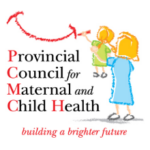
Sept. 2023 | Issue 4
Ontario birthing patients and their newborns deserve high-quality family-centred care at hospitals equipped with the resources to appropriately meet their needs, as close to home as possible. To this end, the Provincial Council for Maternal and Child Health (PCMCH) developed, and currently maintains, the Perinatal, Birthing and Newborn Levels of Care Guidance Document. This document outlines the services, admission criteria and resources available at hospitals that define the type of care they can provide to ensure pregnant individuals give birth in centres with the capacity to care for their needs, and the needs of their newborns, whether low-, moderate- or high-risk.
PCMCH updated the Levels of Care definitions and criteria earlier this year. (Note: previously titled Standardized Maternal and Newborn Levels of Care Definitions, the document has been retitled using gender-inclusive language.) Currently, 93 Ontario hospitals provide perinatal, birthing and newborn services and they are designated under six levels: 1a, 1b, 2a, 2b, 2c, and 3. Levels 1a and 1b serve low-risk patients, Levels 2a, b and c serve moderate-risk patients, and Level 3 serves high-risk patients.
“As a family physician practicing in a Level 1B facility, knowing the care that other hospitals can provide is very helpful,” says Dr. Lorena Jenks, Obstetrics and Paediatrics Lead for Riverside Health Care Facilities in Fort Frances, and member of PCMCH’s Maternal and Newborn Levels of Care task forces. “We have fewer choices in Northern Ontario – our closest Level 2 hospital is in Thunder Bay; the closest Level 3 is in Winnipeg but, within Ontario, it’s London. Travel times from Northern Ontario to sites in the south can be long, so anything that expedites the transfer process is welcome. Knowing that the facility receiving your patient is equipped to meet their care needs streamlines the process and supports better outcomes for the patient.”
Midwives, physicians and other professionals caring for pregnant patients outside of hospital settings may also find it useful to consult the guidance document to learn the levels of care available at hospitals in their area. The document provides further details about how the criteria were established, and information about informed consent, shared decision-making, protocols around patient transfer, and Indigenous health and other cultural considerations.
Similarly, PCMCH’s 2021 Paediatric Levels of Care Summary Report provides information on the care available at Ontario hospitals for three paediatric levels of inpatient care are defined that take into consideration the acuity and the complexity of the patient’s condition and surgeries or procedures. The Summary Report is based on responses received from 139 hospitals that completed an assessment, with 96 indicating paediatric patients are admitted to their hospital. These 96 hospitals received a paediatric LOC designation.
"As healthcare providers, it is important that we have a clear understanding of what is available within our hospitals to ensure our paediatric patients receive the care and services they need as close to home as possible,” says Dr. Teresa Bruni, Medical Director of the Women and Children’s Program at Thunder Bay Regional Health Sciences Centre, and co-chair of the Paediatric Levels of Care work group. "Delivery of care to our paediatric population across our vast province is challenging. Having a clear understanding of available resources and sharing a common language around care provision is key to building capacity, enhancing advocacy and supporting paediatric systems of care in Ontario.”
Return to In This Issue.
